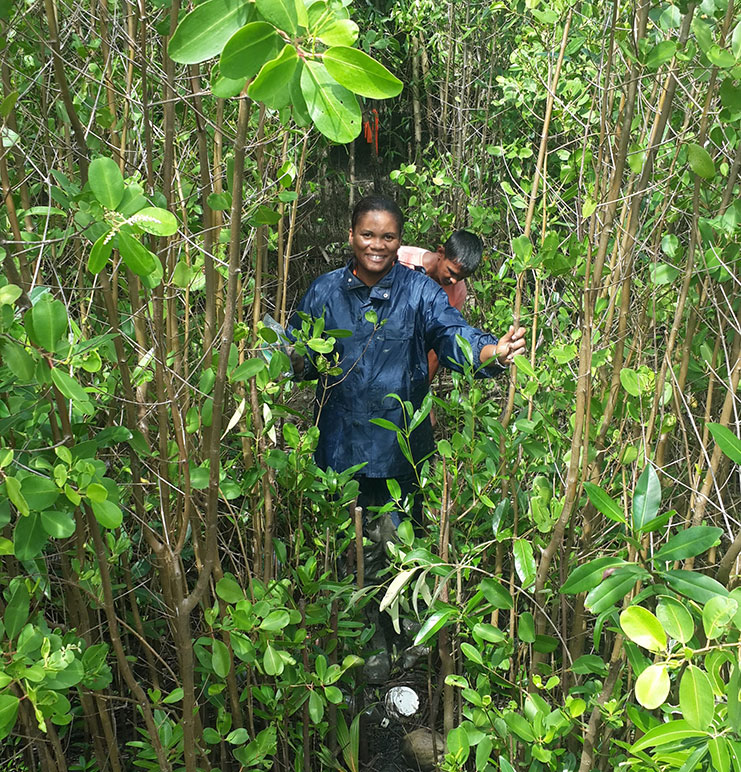The lady behind Guyana’s mangroves
-Kene Moseley-Boston
IF you’ve ever spent time by the river or seawall in Guyana, you’ve probably noticed distinctive trees that rise from a tangle of roots wriggling out of the mud. These are mangroves – unique trees and shrubs that have adapted to the harsh saline conditions.
Mangroves protect vulnerable coastlines from wave action. They hold the soil together and prevent coastal erosion while supporting a rich biodiversity.
In recognition of the role of women in the agricultural sector, this week the National Agricultural Research and Extension Institute (NAREI) will highlight Kene Moseley-Boston, the head of the Mangrove Restoration and Management Department.
Mrs. Boston has been working with the agency since 2010 highlighting the importance of mangroves throughout the country. She has worked on mangroves restoration projects in Regions Two, Four, Five and Six.
“I have a passion for the environment and working with the team at the Mangrove Department affords me the opportunity to contribute towards our national development and climate change adaptation strategy,” Boston said.
The former President College student completed a Postgraduate Diploma in Urban Planning and Management at the University of Guyana and she is presently working on her Masters in the same field.
 Quizzed on her choice to work in the agricultural sector, Boston said, “Agriculture chose me. I started with the Guyana Mangrove Restoration in its early stages as the Admin/Finance Officer as a follow-up to my previous work with a similar EU-funded project in Linden.
Quizzed on her choice to work in the agricultural sector, Boston said, “Agriculture chose me. I started with the Guyana Mangrove Restoration in its early stages as the Admin/Finance Officer as a follow-up to my previous work with a similar EU-funded project in Linden.
Initially, she said her focus was on Project Management and administration but by demonstrating excellence in her department, she was promoted to Project Coordinator.
She explained that the knowledge she gained while doing her Postgraduate Diploma in Urban Planning and Management, provides her with the technical skill to better understand and contribute to the sustainable development of Guyana’s urban areas.
“While my area of work may appear to only deal with the environment, how we plan will impact the state of this environment and given the geography of Guyana’s urban development, mostly coastal, there is a direct impact on the environment,” Boston said.
She explained that a major part of her work at NAREI entails planning and understanding how the future development along the coast would impact existing mangroves areas, and how NAREI’s restoration interventions would impact the existing environment.
“Restoring coastal mangroves reduce the potential for overtopping which reduces the saltwater intrusion on agricultural lands,” the head for Mangroves said.
Her team at NAREI coordinates and plans interventions aimed at restoring mangroves along Guyana’s coast. This also involves the development of interventions to increase awareness and educate the public about the importance of mangroves.



.jpg)








